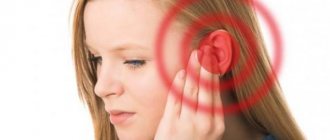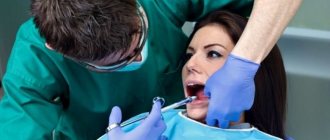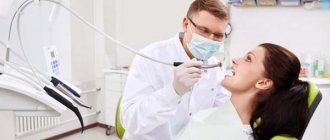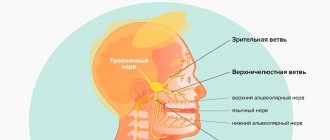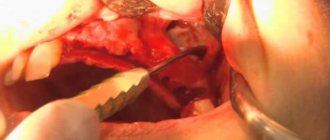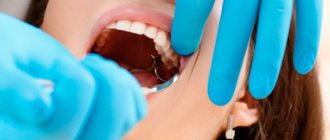Each of us has at one time or another faced the need for dental treatment or removal.
Do not be afraid of these procedures, as they are absolutely painless, thanks to various methods of pain relief.
You should understand the questions of what is tooth extraction and anesthesia?
Tooth extraction is a surgical micro-operation, which is prescribed when treatment is impossible. The procedure is performed under anesthesia, sedation or general anesthesia, which allows the removal to be performed comfortably for the patient.
What are the differences between the main types of pain relief?
Application anesthesia is a type of local anesthesia. The essence of this anesthesia is that instead of an injection, a special agent in the form of a gel or spray with an anesthetic is applied to the oral mucosa. Used for minor interventions. It is often used before general anesthesia, for example, in case of discomfort during professional oral hygiene. Duration of application anesthesia - no more than 30 minutes
Infiltration anesthesia is also a type of local anesthesia, the most commonly used type of anesthesia. The injection helps to minimize the sensitivity of a specific area in the oral cavity. The drug is injected into the gums or into the mucous membrane of the cheek, where one or more teeth requiring treatment are located. Action time is 3-4 hours.
Conduction anesthesia - used during complex surgery, is also a type of local anesthesia, the only difference is in the place of application. The drug is administered in close proximity to the nerve endings, the action time is up to 5-6 hours.
Sedation - this method of pain relief allows you to relieve the patient’s emotional stress, relieves fear and panic. Using a rotomer, a mixture of nitrous oxide and oxygen enters the body. Inhaling vapors through the nose relaxes the patient, a feeling of calm sets in, and the state resembles drowsiness. The patient is conscious, sees everything, understands, but does not concentrate on the pain sensations, due to this they are dulled. Sedation is not anesthesia in the full sense of the word; it is used exclusively in combination with local anesthesia.
General anesthesia - the essence is the inhibition of the central nervous system, when the patient’s consciousness “turns off”. He does not feel pain, the muscles are completely relaxed, there is no stress and negative emotions. The anesthesiologist selects the appropriate type of anesthesia individually for each person, based on the general condition of the patient. Recovery from general anesthesia lasts about 4 hours.
It is worth noting once again that for such common procedures as wisdom tooth removal, treatment of deep caries, pulp removal, the infiltration method of anesthesia is most often chosen.
Removing baby teeth
Milk teeth that can no longer be cured, but they provoke the development of acute inflammation of the bone or periosteum, must be removed. Which method to use will depend on the specific situation.
For example, the milk tooth being removed is already well loosened and the pain when pulled out will be minimal. In this case, the doctor may advise putting on an application, gel or aerosol. Lidocaine aerosol is used quite often. There are 3 mg per 1 kg of body weight. For children, it is better to apply this substance using a cotton swab.
For more serious dental problems, children are given infiltration anesthesia. Lidocaine, Ubistezin Forte and similar medications are used. Two injections are made - from the gum and from the tongue.
Children tolerate these painkillers well. But before using them, it is necessary to undergo tests to identify allergens. It is also worth clarifying whether the child has problems with the cardiovascular system.
What is sedation?
Sedation is a type of anesthesia that uses sedatives to put the patient into a light sleep.
Kinds:
Pharmacological – used for adult patients, through intravenous administration of the latest generation sedatives.
Oxygen – intended for children, used with a nasal mask.
Main contraindications to sedation
In adults:
- Allergy to local anesthetics
- Neuromuscular disorders
- Pregnancy;
In children:
- Under three years of age
- Cough, runny nose, rhinitis
- Epilepsy;
It is necessary to prepare for the sedation procedure. Firstly, you need to avoid eating 3-6 hours before the procedure, and secondly, avoid drinking alcohol 24 hours before.
Features of tooth extraction in pregnant women
- Pain relief methods such as sedation and general anesthesia should not be used, as this may negatively affect the general condition of the fetus.
- It is possible to use local anesthetics, since the effect on the fetus is minimal
- To obtain a dental image, it is recommended to use a radiovisiograph; X-rays are contraindicated.
- Tooth extraction can be carried out during the period from 13 to 23 weeks of pregnancy, but if there is no urgent need, then it is better to postpone the procedure;
When is the choice between sedation and local anesthesia in favor of sedation?
The doctor’s task is to show the patient, explain to him that everything can be done under local anesthesia, work with him and prepare him for this. There are patients who want to do everything faster, but they still feel afraid, do not want to take risks and, accordingly, ask that all treatment be carried out under sedation. Therefore, in the clinics of the German Implantology Center, we carry out manipulations on therapeutic, implantological and orthopedic treatment, also under sedation, when our patients come from cities in Europe, North America, Asia and we, accordingly, have a limited period of time for the patient’s stay in Moscow.
Therefore, we provide sedation to such tourist patients every visit as part of their one-time visit to Moscow, but we carry out a large amount of work with them.
Can you be allergic to sedation?
On the topic of allergic reactions, can you be allergic to sedation? An allergy, most likely, may occur not to sedation, but to the drugs used for sedation. When preparing for sedation, it is necessary to undergo tests, the patient must meet with an anesthesiologist-reanimatologist, collect a complete medical history of the patient, his body characteristics. And here it is important that the patient also conveys the information to the doctor as much as possible and without hiding or concealing anything. And, of course, the tests should be carried out in proven certified laboratories so that everything is clear, clear, and understandable without any distortion of the data, so that the doctor can also bear full responsibility for the patient’s treatment.
Recovery after sedation
How is the patient’s rehabilitation and recovery carried out after sedation at the German Implantology Center? Each patient’s reaction may be different: some recover from sedation a little slower, others come to their senses a little faster. Within about half an hour or an hour, the patient fully regains consciousness, but he still remains for some time in the Research Center clinic under the supervision of an anesthesiologist-resuscitator. Next, a taxi is called for the patient, which takes him directly to his home, or, if the patient comes with his relatives, then, naturally, his relatives take him home.
Recovery after local anesthesia
There are special drugs that can quickly remove the feeling of anesthesia, but if the patient has had a large volume of medical work, then this should not be done, because the volume of interventions was large, and the effect of the local anesthetic can reduce the possible pain effect that can be caused by the volume work. Therefore, the patient is given a package of medical support, the drugs of which are recommended to be used for 2-3 days to a week, depending on the volume and number of manipulations performed. Dental treatment under local anesthesia is one thing, and complex operations under local anesthesia associated with bone grafting and implantation are another. Although it is worth noting that local anesthesia in surgery is now a rarity, it is being successfully replaced by sedation.
More about the procedure
Sedation is a drug-induced state of medical sleep that “blocks” certain areas of the brain. When teeth are removed under sedation, the patient falls into a half-sleep: consciousness remains, you can respond to the doctor’s instructions (for example, turn your head or open your mouth), but the patient does not feel any pain, no unpleasant sounds and smells, no fear or anxiety. When waking up from sedation, many people do not remember the treatment process.
There are two methods of sedation - inhalation, with nitrous oxide, and intravenous, but the most modern and popular is intravenous, during which the drug is administered through a catheter: the drug is effective while its administration continues, and after the drug is stopped, the patient gradually awakens.
Medicines you shouldn't take
Many people use homemade medications for pain relief.
But they have low efficiency and can provoke undesirable results:
- Aspirin. The medicine is intended to perform an antipyretic function. The analgesic effect is minimal. Aspirin is a good blood thinner. This may lead to delayed bleeding. Although this medicine is included in many painkillers.
- Paracetamol. The drug can only cope with mild headaches. It has no anti-inflammatory effect and has a negative effect on the liver. Included in painkillers as an adjuvant.
- No-shpa. Many people think that this medicine is a pain reliever. But that's not true. No-spa is an antispasmodic drug that only eliminates pain associated with spasms. The pain after tooth extraction is completely different and no-spa will not be able to cope with it.
Anesthesia after tooth extraction
After the tooth has been removed and the anesthesia has begun to wear off, pain may occur. Sometimes the pain symptoms are very strong and unbearable to endure. In this case, they resort to repeated anesthesia. The most common pain reliever offered by dentists is Ketanov.
Ketanov is able to relieve a person from severe and sharp pain.
It is often prescribed after surgery. The drug can be used every six hours, but not more than one week.
Like any medicine, Ketanov has side effects.
These include:
- drowsiness;
- dyspeptic disorders;
- the appearance of dry mouth;
- accelerated heartbeat.
The drug should not be taken by people who have:
- bronchial asthma;
- ulcer of the duodenum and stomach;
- kidney diseases.
It is also undesirable for women to use during lactation and pregnancy. If after three days pain or swelling occurs again, you should immediately consult a doctor.
Analgesic drugs
Many people have experienced the process of tooth extraction and know that severe pain is felt in the tissues where manipulation is carried out. It goes away on its own after 3-7 hours.
In some cases, the pain persists much longer. It may be accompanied by increased temperature, pulsation in the wound, and swelling of soft tissues. If we are talking about the removal of the so-called eight teeth, the listed symptoms are almost always encountered. The postoperative period necessarily requires specialist supervision.
For successful tissue healing and prevention of the inflammatory process, the doctor may prescribe wound-healing medications. In addition, he makes recommendations regarding the most effective and at the same time safe painkillers. All of them are available from pharmacies without a prescription. Analgesics are:
- opioids;
- non-opioid;
- combined.
Non-opioid analgesics are usually the drugs of choice.
There are many different ways to combat alcoholism. Many narcologists recommend using medications so that treatment can be carried out at home. Read more in the article: “pills for alcoholism without consequences.”
Among their main features it is necessary to highlight:
- absence of narcotic components;
- are not addictive;
- dispensed without a doctor's prescription;
- sold in every pharmacy;
- There are practically no side effects;
- high efficiency.
Preventive measures
In order for the rehabilitation period to pass faster and to avoid negative consequences, the following recommendations must be followed:
- No later than 10 minutes after a sterile swab has been applied to the wound, it must be removed from the oral cavity. This will avoid infection and inflammation.
- You cannot eat for three hours after surgery and anesthesia. If thirst occurs, you can drink clean water.
- Physical activity and hot water procedures (including shower, bath, sauna, steam bath) are contraindicated for a couple of days after surgery. You should also not heat your cheek.
- You should not smoke or drink alcohol for several days, this will help prevent the seams from coming apart.
- If the patient is experiencing severe pain, an ice compress will help reduce the pain. You can apply cold for no more than five minutes. The doctor may also prescribe pain relievers.
- The patient must take all prescribed medications.
A few days after the operation, you need to see your doctor, and if you experience unpleasant or severe pain, then sooner.
In our clinics, general anesthesia is not used.
Anesthesia – benefit or harm?
The possibilities of modern medicine are incredibly great. Our clinic uses very high-quality drugs that can relieve the patient from painful sensations during surgical procedures, and at the same time are completely safe for health. Already 30-40 minutes after the end of the manipulations, the person can go home. Nowadays, you don’t have to endure severe pain during dental procedures. Qualified doctors know how to create maximum comfort for each patient. We have done everything to ensure that if it is necessary to remove a tooth, there will be no fear or worry. For patients who needed tooth extraction, the price in Dolgoprudny will be another reassuring factor. This or that type of anesthesia is immediately included in the price.
Anesthesia doesn't work
There are cases when the anesthesia does not work and the person feels pain. There are several factors why this happens:
- Alcohol. The chemical composition of ethyl alcohol can block the effects of the anesthetic. Therefore, it is not recommended to go to the dentist if you have recently consumed strong drinks.
- Using large amounts of painkillers. If a person is taking medications that contain painkillers, they should not be taken before seeing a doctor.
- A person may have individual immunity to certain anesthetics. This factor is very rare.
If the anesthesia does not work, then it is worth understanding the reason. Having received the result, the treatment is postponed to another day.
Features of carpule anesthesia
Injection anesthesia in modern clinics is performed using the carpule method - using a special syringe into which a capsule with medicine is already inserted. The advantages of carpule anesthesia are obvious:
- Thin needle. In carpule syringes, the thickness of the needle does not exceed 0.3 mm (for comparison, the thinnest needles of disposable syringes are 0.6 mm thick).
- Absolute sterility. The syringe into which the anesthetic cartridge is inserted is packaged by the manufacturer. There is no need to perform any additional procedures before administering the medicine.
- To ensure a prolonged effect of anesthesia, adrenaline is added to some carpule formulations.
Wisdom teeth and features of their eruption
The third molar (molar) is more often called a wisdom tooth or “figure eight” (the third molar is the 8th from the middle of the dentition). It is not preceded by a milk tooth, and the formation does not occur in the prenatal period, but at the age of 3–5 years. The “eight” erupts later than others, when the jaw bones have completely or partially stopped growing at the age of 14 to 30 years, sometimes even later. Growth and eruption completely depend on the hereditary characteristics of the organism.
Location of wisdom teeth
The crown of the third molar is no different in appearance from adjacent crowns. The main features are in the structure of the roots and root canals. As a rule, there are several channels. They are tortuous, narrow and are not always located in a separate root. The norm is 2–3 roots, but sometimes there are more roots, fewer, or only one, and several canals can be seen in it. This makes it very difficult to treat caries.
By the time the third molar erupts, the jaw bones in most cases have already finished growing, so it often does not have a place in the dentition, which means that eruption occurs incorrectly. This condition is called dystopia. Normally, the “figure eight” should erupt vertically and correspond in height to the rest of the crowns, but a dystopic tooth, trying to erupt, changes its position and can be located:
- vertically, but significantly lower (sometimes higher) than the rest of the teeth in the row;
- horizontally - if growth goes towards the neighboring tooth, its root suffers; when growing forward or backward, soft tissues are injured;
- diagonally (beveled, at an angle) - both the root and the crown of the adjacent tooth may be damaged;
- turning around its axis - tortoposition;
- in place of another tooth - transposition.
Sometimes the “eight” does not erupt at all. If at the same time a person does not have any complaints and the rudiments of it are not visible on the x-ray, then this is a variant of the norm. But when the “eight” does not erupt completely or does not erupt at all, which is accompanied by swelling and pain, then this is no longer the norm. An impacted tooth is:
- completely unerupted, covered on top with bone tissue of the jaw or gum;
- partially cut through, but covered with a hood on top, through which part of the crown can be seen.
- Third molars are often both dystopic and impacted.
